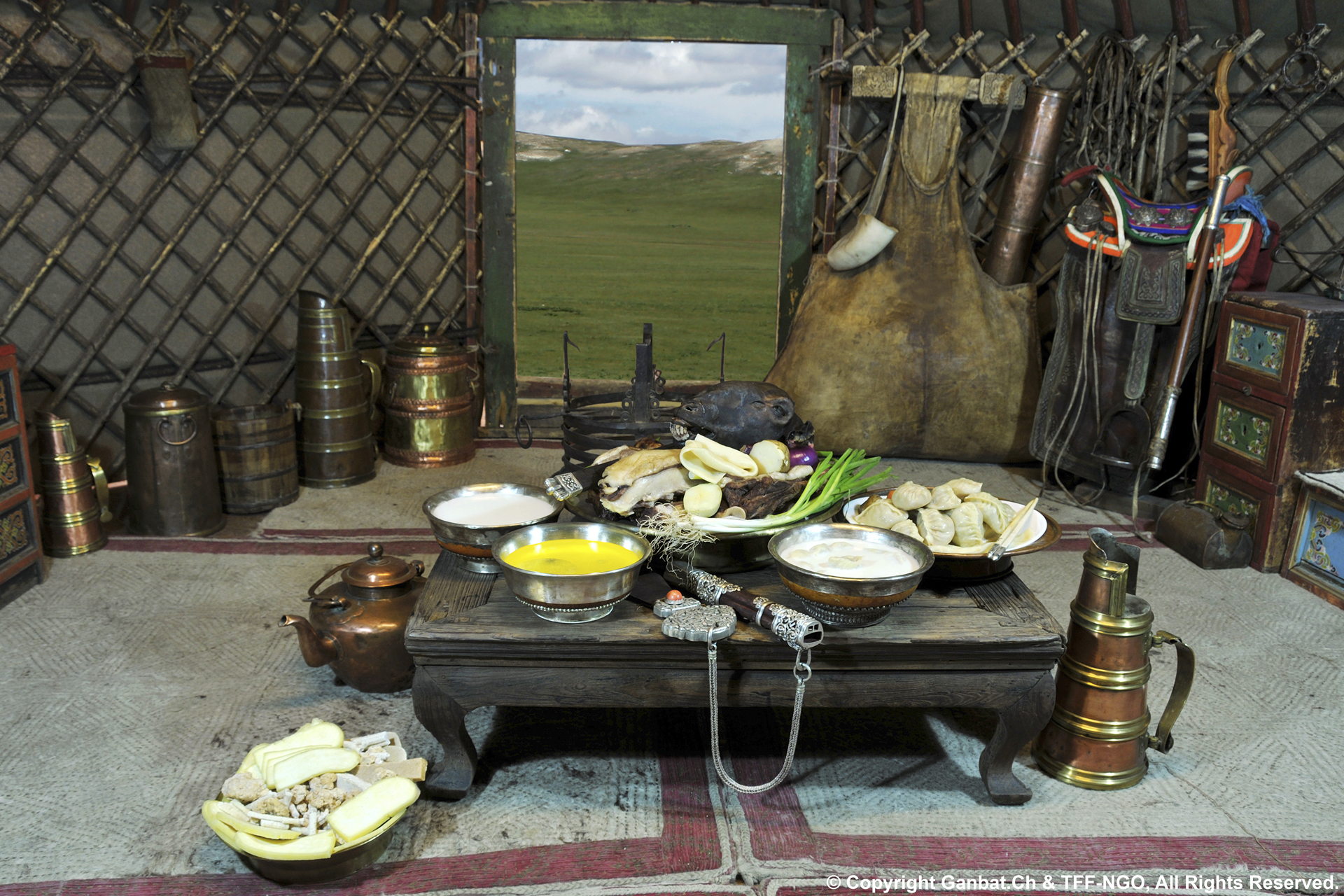Mongolian cuisine

Mongolian cuisine is an integral part of a nation’s culture and history. The Mongols have engaged in nomadic animal husbandry ever since their beginnings in order to adapt to the harsh climate of the region. Given its climate, Mongolian cuisine heavily consists of meat, dairy products and other animal products. Meat is eaten most during the winter and colder springs. In the warmer months of summer and autumn, Mongolians consume more dairy products, jerky and fruits.
It is hard to classify what kind of meal each Mongolian dish falls into because there are no clear differentiations. For example, dishes such as milk tea with dumplings, Mongolian-style porridge, rice tea or cream soup could be either a snack, starter, or main course.
Dishes such as boiled meat, stuffed intestines, sausages, fried dumplings, fried liver, khorkhog (barbecue dish) and boiled shank are best considered as main course meals, but a person eating any of these does not need to have eaten an entree. Nomads did not sit at dining tables to eat, and they became accustomed to eating all types of food all at once, without separating food into courses.
Thus, it is better to classify Mongolian traditional cuisine into dairy products, meat and animal fats.
With the changing society and culture, Mongolians’ lifestyles and eating habits are also changing. Seventy years under Soviet rule infused European culture into Mongolian society and cuisine. Starting from the transition to a market economy in 1990, Western countries opened their doors to Mongolians and vice versa. Again this brought cultural diffusion to Mongolia.
Mongolian styles of dress, homes and jobs are rapidly evolving along with the cuisine.
UNESCO Intangible Heritage: Airag

The Mongolian traditional beverage of fermented mare milk and its associated techniques were inscribed on the Representative List of the Intangible Cultural Heritage of Humanity by UNESCO as of late December 2019. Methods for making the airag consist of milking the mares, cooling the milk and churring it over 500 times with the camel felt starter inside the milk to boost the fermentation. At the end of each summer, a square camel felt is put inside the brew and dried up to be stored over the winter. The next summer, the felt is placed inside the new milk.
Making the airag require the nomadic knowledge that has been passed down for hundreds of years. In addition to being used for symbolic and religious festivals, the beverage has been proven effective for curing diseases and is an easily digestible beverage. Those who carry on the tradition of making airag inherited the knowledge from their ancestors, and this heirloom has been passed on through thousands of years.